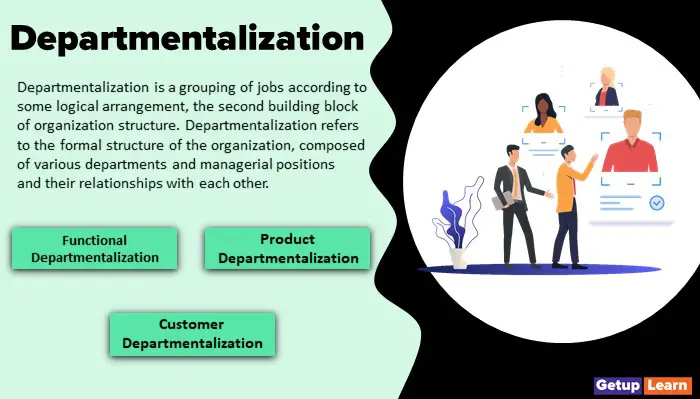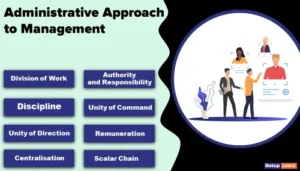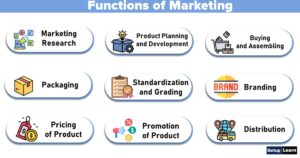Table of Contents
What is Departmentalization?
Departmentalization is a grouping of jobs according to some logical arrangement, the second building block of organization structure. Departmentalization refers to the formal structure of the organization, composed of various departments and managerial positions and their relationships with each other.

As an organization grows, its departments grow and more sub-units are created, which in turn add more levels of management. This often creates less flexibility, adaptability, and units of action within the firm.
Departmentalization is the efficient and effective grouping of jobs into meaningful work units to coordinate numerous jobs-all for the expeditious accomplishment of the organization’s objectives.
Types of Departmentalization in Management
These are the common types of departmentalization in management given below:
- Functional Departmentalization
- Product Departmentalization
- Customer Departmentalization
- Departmentalization by Process
- Departmentalization by Task Force
- Location or Territory Departmentalization
- Matrix Departmentalization

Functional Departmentalization
Functional departmentalization groups together those jobs involving the same or similar activities. Here; the word ‘function’ indicates organizational functions such as finance and production, rather than the basic managerial functions, such as planning or controlling, manufacturing, finance, and marketing departments, each an organizational function.
Product Departmentalization
Product departmentalization involves grouping and arranging activities around products or product groups. This method places all the resources and authority under one manager to get a product manufactured and marketed.
Customer Departmentalization
Customer departmentalization is used when a great emphasis is placed on effectively serving different customer types.
For instance, full-time day students and part-time night students of graduate business programs in universities usually are different in demographic profile and personal needs. Wholesale and retail are very different in many industries, as our government and private sector customers.
So, here the organization structures its activities to respond to and interact with specific customer groups. Most banks are commonly designed to meet the needs of different kinds of customers; business, consumer, mortgage, and agricultural loans.
Departmentalization by Process
Departmentalization by the process is preferable when the machinery or equipment used requires special skill for operating, is of a large capacity that eliminates organizational dividing, or has technical facilities which strongly suggest a concentrated location.
Departmentalization by Task Force
This arrangement involves assigning a team or task force to a definite project or block of work, which extends from the beginning to the completion of a wanted and definite type and quantity of work.
Location or Territory Departmentalization
Location departmentalization logically groups jobs on the basis of defined geographic sites or areas. The defined sites or areas may range in size from a hemisphere to only a few blocks of a large city.
Matrix Departmentalization
Matrix management or matrix departmentalization was introduced in the early 1960s in response to the growing complexity and size of technically oriented enterprises, which needed more flexibility.
Matrix departmentalization attempts to combine functional and task force (project) departmentalization designs to improve the synchronization of multiple components for a single activity (i.e., a moon launch), to improve economies of scale, and to better serve the customer and company.
What are the types of departmentalization?
The following are types of departmentalization in management:
1. Functional Departmentalization
2. Product Departmentalization
3. Customer Departmentalization
4. Departmentalization by Process
5. Departmentalization by Task Force
6. Location or Territory Departmentalization
7. Matrix Departmentalization.
What is the meaning of departmentalization?
The division of labor divides the jobs into smaller activities. In order to coordinate these activities, they are grouped together. The bases by which these activities are grouped together are known as departmentalization
What is functional departmentalization?
Functional departmentalization groups together those jobs involving the same or similar activities. Here; the word ‘function’ indicates organizational functions such as finance and production, rather than the basic managerial functions, such as planning or controlling, manufacturing, finance, and marketing departments, each an organizational function.
What is product departmentalization?
Product departmentalization involves grouping and arranging activities around products or product groups. This method places all the resources and authority under one manager to get a product manufactured and marketed.













